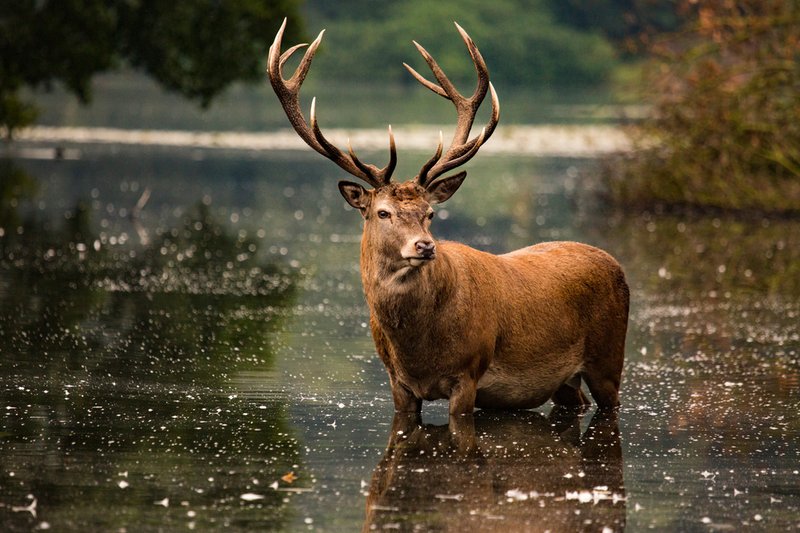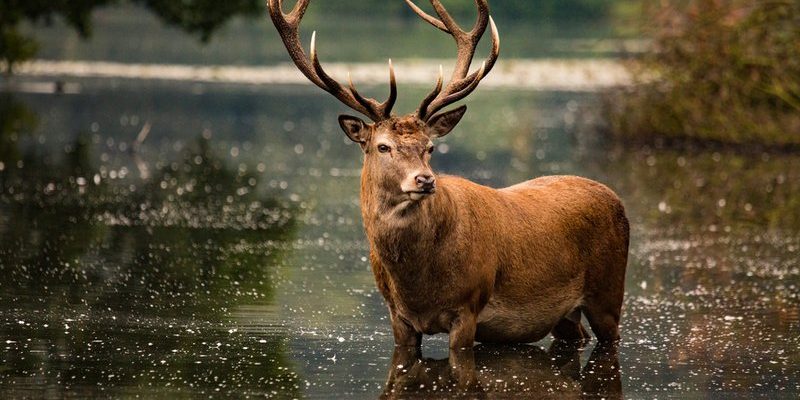
In this article, we’ll explore some incredible facts about stags that might just surprise you. Whether you’ve seen one prancing through the woods or caught a glimpse in a nature documentary, stags have a remarkable story to tell. So, grab your favorite drink, settle in, and let’s dive into the world of these fascinating animals.
1. The Antlers: Nature’s Masterpiece
When we think of stags, their antlers often steal the show. These impressive structures are not just for show; they serve a crucial role in a stag’s life. Stags grow antlers annually, which are made of bone and covered in a soft, velvety skin called “velvet.” This velvet supplies nutrients to the growing antlers, allowing them to reach impressive sizes.
Once the breeding season wraps up, usually in late fall, the antlers naturally shed. It’s an incredible transformation that enables the stag to conserve energy during winter months. You might be wondering, how do they regrow such magnificent antlers every year? Well, the process requires a lot of energy and nutrients, stemming from their diet. Stags are herbivores, munching on grass, leaves, and even fruits to fuel their growth.
2. Social Creatures: The Importance of Herds
Stags are not lone warriors; they often live in groups called herds. But here’s the twist: during the breeding season, stags usually separate from the herd to compete for mates. Imagine a group of friends who all want to impress the same crush! The stags will engage in sparring matches, showcasing their strength and dominance. These displays are vital for establishing social hierarchy and attracting females.
When not in the mood for love, stags rejoin the herd, enjoying the safety of numbers. Herds help protect them from predators, as there’s strength in numbers. This social behavior also allows stags to share information about food sources and potential dangers in their environment.
3. A Stag’s Diet: What’s on the Menu?
You might think that stags are picky eaters, but they have a surprisingly varied diet. They primarily feast on grass, leaves, and shoots, but they won’t stop there. Stags also enjoy acorns, berries, and even the bark of certain trees. This diverse diet is essential for their health and especially important during the growth of their antlers.
One interesting fact is that stags are selective foragers. They often choose the tastiest and most nutritious plants first, which is vital for their energy levels. This foraging behavior can change according to the season, as some plants become more available in different times of the year. So, if you’re lucky to spot one, you might notice it nibbling on something specific—just know it’s making a careful choice!
4. Communication: Beyond Just Sounds
Stags have a reputation for being quiet creatures, but they have several ways of communicating. Sure, they can grunt or snort, but their body language is just as important. When a stag is feeling confident, it might display its antlers and strut around to attract attention. Conversely, if a stag feels threatened, it may lower its head and posture defensively.
Additionally, during the breeding season, stags will produce a distinctive call known as a “roar.” This deep sound isn’t just for show; it helps establish territory and signal to females that they’re ready to mate. It’s fascinating how these subtle nuances of communication play a huge role in their lives, don’t you think?
5. The Breeding Season: Rutting Behavior
Ah, the breeding season—also known as the rut. This time of year transforms the usually peaceful lives of stags into a whirlwind of competition and courtship. The rut typically occurs in the fall, and it sparks fierce battles between competing males. Picture a dramatic showdown in the forest as two stags lock antlers and push against each other, showcasing their strength.
Females, or does, are attracted to the dominant stags, leading to a fascinating game of strategy and strength. Stags will chase away rivals and even display aggressive behaviors to win over the does. Interestingly, the victor of these battles often boasts the largest and healthiest antlers, making the physical condition of a stag crucial during this period.
6. Lifespan and Growth: From Fawn to Adult
Life begins as a little fawn for stags. These tiny, spotted creatures are born in the spring, and they are surprisingly vulnerable at that age. For the first few weeks, fawns stay hidden in the underbrush, relying on their mothers for nourishment and protection. As they grow, they begin to venture out and interact with their environment.
Stags typically reach maturity around 2 to 3 years of age. During this time, their antlers start to develop, marking the transition from youthful fawn to mature stag. In the wild, stags can live up to 10-15 years, depending on environmental factors and predation. It’s intriguing how their lives are a mix of growth, competition, and community.
7. Habitat: Where Do They Call Home?
Stags are adaptable creatures, which allows them to thrive in various habitats. You’ll find them in forested areas, grasslands, mountains, and even some urban settings. Their choice of habitat largely depends on the availability of food and shelter. Picture a lush, green forest with plenty of underbrush—this is a perfect spot for a stag to feel safe and well-fed.
During the colder months, stags will migrate to regions with better food sources. This migration isn’t always an easy journey; they often face obstacles like rivers and predators. But their keen sense of smell and sharp instincts help them navigate their environment, which is pretty impressive!
8. Conservation Status: Protecting Stags
Many species of stags, like the majestic red deer or the elusive sika deer, are currently facing threats due to habitat loss and overhunting. Conservation efforts are in place to ensure that these beautiful creatures continue to thrive. Local wildlife organizations often work on protecting their habitats and promoting responsible hunting practices.
You might be wondering what you can do to help. Supporting local wildlife organizations, educating others about these animals, and advocating for natural habitats can all make a difference. It’s essential to understand that every small action adds up to a more significant impact on the conservation of these magnificent creatures.
9. Stags in Culture: Symbolism and Significance
Stags have long been symbols of strength, majesty, and grace in various cultures. In many mythology tales, they are seen as messengers of the forest, bridging the gap between the human world and nature. For example, in Celtic mythology, the stag represents the spirit of the forest, embodying the beauty and mystery of nature.
You can find stags depicted in art, literature, and folklore, showcasing their majestic stature and cultural significance. Whether in paintings or stories, they often symbolize leadership, resilience, and connection to nature. This rich cultural legacy makes them even more fascinating!
10. Amazing Facts: What You Might Not Know
Finally, here are a few more interesting facts that might blow your mind! Did you know that stags can run at speeds of up to 30 miles per hour? That’s pretty quick for such large animals! Also, their keen eyesight and sense of smell help them detect predators from miles away.
Another fun tidbit is that stags can jump over obstacles that are up to 9 feet high. This ability is crucial for escaping danger in the wild. They might look graceful when they leap, but it’s all about survival.
Stags are truly remarkable creatures, filled with astonishing traits and behaviors that make them stand out in the animal kingdom.
In conclusion, stags are more than just beautiful animals; they represent a rich tapestry of life in our forests and fields. Their fascinating facts—from their impressive antlers and social behaviors to their cultural significance—speak volumes about the natural world. So, the next time you see a stag or a glimpse of one, take a moment to appreciate the incredible story behind it. Nature never ceases to amaze, and stags are a perfect example of that wonder.

